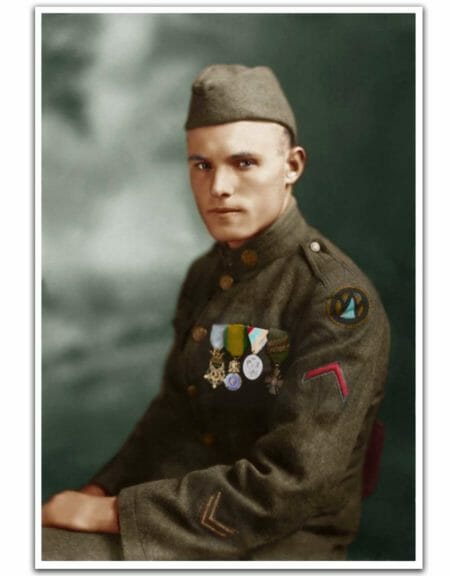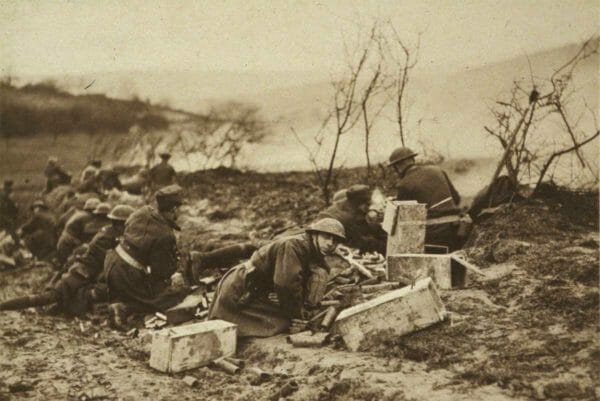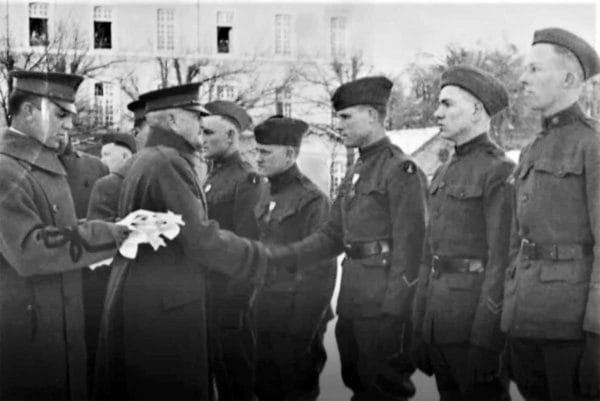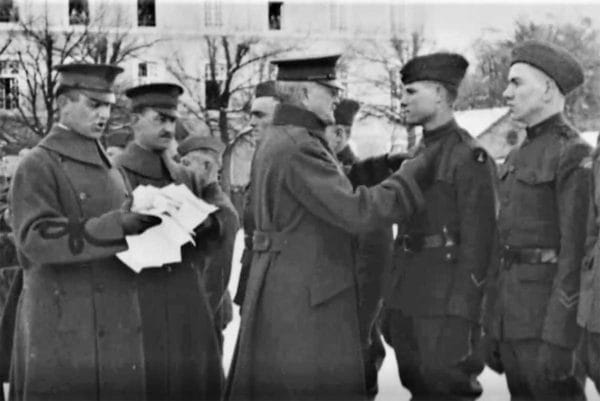By Katie Lange

USA – -(AmmoLand.com)- In World War I, “no man’s land” marked the spot between Allied and enemy trenches where cruel and deadly battles often took place. It was called “no man’s land” for a reason — no one wanted to be there. But in October 1918, Army Pfc. Charles Barger and another young soldier braved this wasteland to save two officers. That courage earned them both the Medal of Honor.
Barger’s life was filled with challenges from the start. He was born on June 3, 1894, in Mount Vernon, Missouri, to George and Cora Staffelbach. When he was three, though, his father, who was part of a notorious gang, was sentenced to life in prison, so his mother placed him for adoption. He was raised by Sidney and Phoebe Barger and grew up in Stotts City, Missouri, working as a farmhand.
Barger enlisted in the Army on April 1, 1918, and became part of the 354th Infantry, 89th Division, Company L. His unit arrived in France in June 1918, and the 24-year-old was selected to be an automatic rifle gunner. He quickly earned himself a fearless reputation.
In late October 1918, Barger and his assigned regiment, the 177th Brigade, were situated on the southwest edge of Bois-de-Bantheville, France, to surveil German positions ahead of a prepared advance. Their mission was part of the Meuse-Argonne Offensive, the 100-day offensive that brought an end to the war.
For more than a week, everyone in the brigade dealt with the effects of mustard gas that was released via high-explosive shells fired by the Germans. No one escaped the fumes, which lingered for days. Barger was no exception, but he never reported for medical treatment.


On Oct. 31, 1918, several patrols were sent into no man’s land during the daylight hours — an unusual move considering most patrols were sent at night during the cover of darkness. Two patrols from Barger’s regiment got pinned down by heavy gunfire in the exposed area. Two wounded officers were trapped.
Once Barger got word of this, he and Pfc. Jesse Funk voluntarily ran about 500 yards with a stretcher through heavy machine-gun fire to rescue the men. They got to 2nd Lt. John Millis first, but he insisted the pair rescue 1st Lt. Ernest Rowell. They did that and returned for Millis when they realized there was a third enlisted man about 50 yards from an enemy machine-gun nest. After taking Millis to safety, they returned for that man, too.
For their actions, Barger and Funk were awarded the Medal of Honor, which was presented to them by Army Gen. John Pershing in February 1919. The pair also earned decorations from several Allied governments, including the French Croix de Guerre.


After the war, Barger returned to farming with his family, then tried construction before briefly returning to the Army in 1921. He was discharged again after only a few months.
In 1922, Barger joined the Kansas City Police Department. Not long after he was hired, he was involved in a shootout with suspected criminals. Barger was shot five times in the wrist, arm, chest, and head, yet he still managed to return fire. He survived and continued to work as a police officer for the next decade.
By 1936, Barger had moved to a farm outside of Oak Grove, Missouri, where he remained until he died on Nov. 25, 1936. He was buried in Blue Springs Cemetery, not far from his home.
Remembrance
According to “Quietly Exploding,” a Barger biography written by Air Force Master Sgt. Joseph Bowman, Barger’s medals were donated to the Liberty Memorial Museum in Liberty, Missouri, after his death. Sadly, in 1967, someone broke into the museum and stole several items, including Barger’s Medal of Honor. It was never recovered.
Barger’s family worked for decades to get the medal replaced. Their efforts finally paid off in January 2014, when the Army reissued the medal.
This month, the Army’s 88th Readiness Division is conducting a memorialization ceremony at an Army Reserve Center in Kansas City, Missouri, to name the facility after Barger.
This article is part of a weekly series called “Medal of Honor Monday,” in which we highlight one of the more than 3,500 Medal of Honor recipients who have earned the U.S. military’s highest medal for valor.
U.S. Department of Defense
The Department of Defense provides the military forces needed to deter war and ensure our nation’s security. The foundational strength of the Department of Defense is the men and women who volunteer to serve our country and protect our freedoms. Visit www.defense.gov/ to learn more.


Do you know what I see in those two award photos? A group of unassuming young men that just did their duty to the best of their abilities, and were probably uneasy with all the fuss being made. That and the fact they were getting their medals from Gen. “Blackjack” Pershing
I bet that he chuckled to himself, occasionally, wondering what the hell he was thinking, as his life went on. Many thanks to all of you vets out there that did something dumb once … and somehow survived.